
- Straightforward application with two applicators.
- Flexible, rubber-like seal that’s abrasion-resistant.
- Requires a clean surface for optimum adhesion.

- Water-based urethane formula, no mixing required.
- Fast-drying, tacky in 30-60 minutes, fully dry in a few hours.
- Built-in foam applicator pad, though it may fall off easily.
- Specially formulated for silicone-coated gear.
- Cures to a flexible, durable bond, ideal for extreme weather conditions.
- Comes with a narrow applicator brush, simple application process.
While camping in the rain isn’t going to ruin your vacation, rain inside your tent sure will. If your tent seams are leaking, then you need to get them sealed and fast. You can also use your tent seam sealer on a wide variety of outdoor gear, to ensure you stay dry no matter what. Here’s our guide to choosing the best tent sealer, so you can have a fantastic trip and still enjoy the great outdoors even if you get a rainy week camping.
Contents
- 1 Best Tent Seam Sealers Reviewed
- 1.1 Gear Aid Seam Grip WP Waterproof Sealant for Tents
- 1.2 Coleman Seam Sealer
- 1.3 Gear Aid Seam Grip SIL Silicone Sealant for Silnylon Tents
- 1.4 Kenyon Seam Sealer Three
- 1.5 Texsport Polyurethane Waterproof Seam Sealer for Tents
- 1.6 Gear Aid Seam Grip FC Fast Cure Sealant for Tents
- 1.7 Iosso Seam Sealer
- 1.8 Gear Aid Tenacious Tape
- 2 Best Tent Seam Sealer Comparison Table
- 3 Buyer’s Guide to Buying the Best Tent Seam Sealer
- 4 FAQ: Best Tent Seam Sealer
- 5 Best Tent Seam Sealers Recap
- 6 Final Thoughts
Best Tent Seam Sealers Reviewed
Wondering which tent seam sealer is best for your camping gear? We’ve reviewed eight of the most popular versions.
Whether you need a fast-curing tent seam sealer or one that’s extra easy to apply, we’ve covered all major types below in our best tent seam sealer reviews.
Gear Aid Seam Grip WP Waterproof Sealant for Tents

Having a penchant for hiking and camping, I often find myself facing the wrath of unpredictable weather. It was during one such expedition that I encountered the quintessential challenge every camper dreads – a leaky tent. The seams of my trusted shelter started betraying me, letting in droplets of cold rainwater. That’s when Gear Aid Seam Grip WP came into the picture as a savior. I decided to grab a couple of tubes, given its popularity among the outdoor community.
The application was straightforward. The tube comes with two applicators, a larger screw-on brush for broader tent seams, and a thinner one for other gear. I appreciated this detail as it made the application process less messy and more precise. I started with my tent, meticulously drawing the tube along each seam from the inside, and then proceeded to seal some of my other outdoor gear.
I let it cure overnight, even though it felt a bit tacky beyond the suggested 8-12 hour cure time. A sprinkle of talcum powder before folding and storing my tent ensured it didn’t stick to itself, a small but useful tip I found from other users’ experiences.
The following weekend, I headed to a local music festival, setting up my tent on the slightly muddy terrain. The weather decided to test my efforts and unleashed a torrential downpour throughout the weekend. To my relief, the sealed seams held up impeccably. The interior of my tent remained dry, save for some condensation, which was to be expected given the rain’s persistence.
I noticed the sealant cured into a flexible, rubber-like seal, appearing shiny and wet, which I found to be aesthetically pleasing against the rugged backdrop of my camping spot. The seal resisted the abrasions well, showing no signs of peeling or cracking despite the harsh conditions.
A few weeks later, I embarked on an 8-week road trip, frequently setting up my tent. It rained heavily one night, but the areas I had sealed remained leak-free, validating my trust in Gear Aid Seam Grip WP once again.
The product did require a clean surface for optimum adhesion, a step I didn’t mind as it promised a longer-lasting seal. I also appreciated the advice of doing the application in stages for larger items, as rushing through it could lead to the seams sticking together and potentially ruining the item.
One downside, however, was the lifespan of the tube once opened. The sealant started hardening, although storing it in a ziplock bag in the freezer did prolong its usability for me. Yet, the applicators didn’t fare well past the first use, leading me to resort to popsicle sticks for subsequent applications.
On a solo hiking trip last fall, I decided to explore the rugged trails of the Pacific Northwest. As someone who thrives in the embrace of nature, the forecast of rain didn’t deter me. I pitched my tent near a serene lake, the tranquility only broken by occasional droplets heralding the incoming downpour. As night descended, so did a relentless rainstorm. However, with Gear Aid Seam Grip WP having fortified my tent seams, I lay inside, dry and snug.
As the rain pattered against my tent, I felt a sense of accomplishment and relief. The sealant had held up remarkably, turning what could have been a night of grappling with leaks into one of peaceful sleep to the lullaby of raindrops. The next morning, I inspected my tent. Despite the torrential rain, the sealant remained intact, showcasing its exceptional bonding power. The clear, flexible rubber-like seal looked as good as new, shining softly under the morning sun.
This experience not only reinforced my trust in Gear Aid Seam Grip WP but also allowed me to enjoy my adventure without the nagging worry of waking up to a soaked tent. It’s the kind of assurance that lets you enjoy the wilderness, come rain or shine. And for someone whose soul craves the outdoors, this sealant isn’t just a tube of adhesive; it’s a ticket to unhindered adventures.
Reflecting on my experience, Gear Aid Seam Grip WP has become a staple in my outdoor gear repair kit. Its durable urethane formula, ease of application, and the robust, flexible seal it provides, make it an invaluable asset for anyone looking to extend the life of their outdoor gear amidst the relentless elements. And while it may have its minor inconveniences, the peace of mind it offers under a stormy sky far outweighs them.
Pros:
- Versatile Use: Effective on various outdoor fabrics like nylon, vinyl, leather, polyester, and canvas, and also useful for repairing backpacks, mittens, and other gear.
- Durable Seal: Creates a flexible, rubber-like seal that remains waterproof and abrasion-resistant through harsh weather conditions.
- Easy Application: Comes with two applicators for precise application on different surfaces, making the process straightforward even for larger items like tents.
- Effective Performance: Provides a reliable waterproof seal that withstands heavy rainfall, ensuring a dry interior in tents and other outdoor gear.
- Reasonably Priced: Offers a cost-effective solution for extending the life of outdoor gear.
Cons:
- Lengthy Cure Time: Takes longer than the suggested 8-12 hours to cure fully, and requires a dusting of talcum powder to prevent sticking if items are folded and stored.
- Limited Tube Life Post-Opening: Once opened, the product starts to harden, though storing it in a freezer can extend its usability.
- Applicator Longevity: The applicators are not very durable past the first use, necessitating alternative tools like popsicle sticks for subsequent applications.
Coleman Seam Sealer

The Coleman Seam Sealer features a water-based urethane formula that gets to work fast, waterproofing your tent seams for dry nights in the wilderness. This versatile sealant can also be used on tarps, awnings, and backpacks, plus other outdoor gear.
Available in a two-ounce bottle, you’ll have enough product to seal your average five-person tent and fly. Or treat a smaller one and seal the seams on the rest of your waterproof camping gear. Note that while this product does dry clear, it does create a bit of a messy finish, so care is needed when applying if you’re really bothered about how your tent looks.
This tent seam sealer has a fast-drying formula, with no mixing required. It will be tacky to the touch in around 30-60 minutes and fully dry in just a few hours. So, if you have an imminent camping trip and forgot to reseal that leaky seam before storing your tent last time, this tent sealer could be one of your best options for a rapid cure.
By and far the main disadvantage of this particular seam sealer is its foam applicator pad. Unfortunately, this pad is built-in, making it difficult to replace when it keeps falling off causing the product to pour out.
Also, it is just too flat to be able to get into your tent’s corners. If you have the time and effort required to persevere, plus ideally some brushes or a small sponge, you can get the job done, but there are other easier options out there.
Gear Aid Seam Grip SIL Silicone Sealant for Silnylon Tents
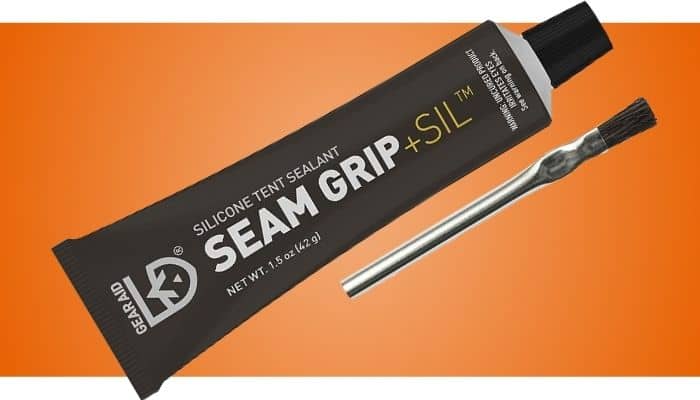
If you have a silicone-coated tent, you need a silicone tent seam sealant, as only silicone will adhere to silicone. Otherwise, you won’t get the bond required to keep water out. Seam Grip SIL by Gear Aid has been specially formulated to seal all silnylon tents. It can also be used on your ultra-light camping and hiking gear that is silicone coated, such as backpacks.
Thanks to its excellent adhesion and waterproof qualities, this sealant forms a durable bond that keeps water out. Importantly for tents and backpacks, this tent sealer cures to provide a highly flexible permanent bond that won’t crack or peel. It is also highly weather-resistant, suitable for camping in extreme cold or heat.
Long-lasting and highly durable, you can also use this product to patch pinhole leaks and small tears. What’s more, application is simple and a narrow applicator brush is included with your purchase. If you are repairing pinhole punctures, you’ll need to apply tape first to create a backing, which you can later remove.
This silicone tent seam sealant dries clear, so your tent, backpack, and other silicone coated gear will still look like new. It comes in a 1.5 ounce tube which will give you around 24 feet of linear seam coverage.
A great tip for a smoother bead is to apply with a syringe or foam brush for more control. With its six hour cure time and flexible finish, it’s also a handy product to take out with you for in-field repairs.
Kenyon Seam Sealer Three

The Kenyon Seam Sealer Three is a water-based sealant that now uses 75% less petrochemicals than the original version, a good step towards protecting nature. This aqueous urethane waterproof coating penetrates deep into your tents seams to completely seal the stitch holes, preventing any leaking from occurring.
This sealant dries to a translucent finish, however, note that it can darker lighter fabric quite considerably. If this is likely to be an issue for you, we recommend spot testing on an inconspicuous part before treating your entire tent. Available in a two ounce format, you should have plenty enough to seal a small tent, although for family sized models, you may want to purchase several units.
You can use Seam Sealer Three on all your synthetic-coated outdoor gear, including backpacks, raingear, and tarps. Its flexible properties are non-restrictive, so you can fold up your tent without worrying about it detaching. It also has the distinct advantage of not only waterproofing your seams, but also being washable and dry-cleanable making seasonal maintenance much easier.
On the downside, this seam sealer is very runny, so it can be a little tricky to apply. What’s more, the in-built applicator tip leads to quite a bit of wattage, so you may want to get yourself a thin paintbrush for an easier, more even application.
On the whole, this is a good budget-priced tent seam sealer that will prevent leakage through your seam stitching. Quick and clear drying, it’s a no-nonsense product that gives you results fast, for a long lasting, flexible seam coating.
Texsport Polyurethane Waterproof Seam Sealer for Tents
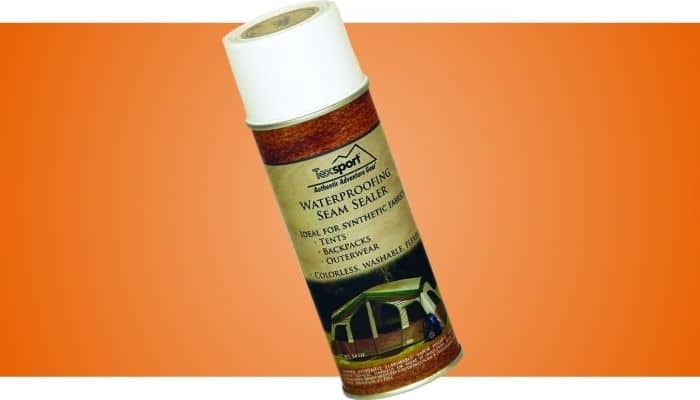
If you are looking for a tent seam sealer that is easy to apply, then make sure you check out this spray-on version by Texsport. Ideal for getting right into your tent seams, you can also use this product to treat whole panels as well for improved water-resistance all round.
Use this polyurethane waterproof seam sealer on your tent, as well as your backpack or rainwear, it is compatible with most synthetic fabrics. Colorless, washable, and flexible, it’s an ideal choice for seam sealing most waterproof camping gear.
The main advantages of using this particular product, aside from its easy spray-on application, is that it also protects your new or cleaned tent from dirt as well as moisture. What’s more, it reduces fading by sunlight, a key factor in improving your tent’s waterproofing durability. Too much sun exposure can, over time, reduce your tent’s waterproof coatings efficacy and this sealer helps to prevent and delay this.
Non-toxic and odorless when dry, be aware that this sealant is very strong-smelling during the application process, so be sure to treat your tent outside. While this product works very well, you don’t get a huge amount of coverage from a 14-ounce spray can. If you are looking to treat your entire fly sheet as well as your ground sheet, plus the seams, you’ll need to get several cans.
While this is not the most cost-effective solution to sealing your tent’s seams, it is highly practical and its professional strength, guaranteed effective formula really does work well.
An excellent choice for drier nights camping as well as protecting your gear from dirt and the sun.
Gear Aid Seam Grip FC Fast Cure Sealant for Tents
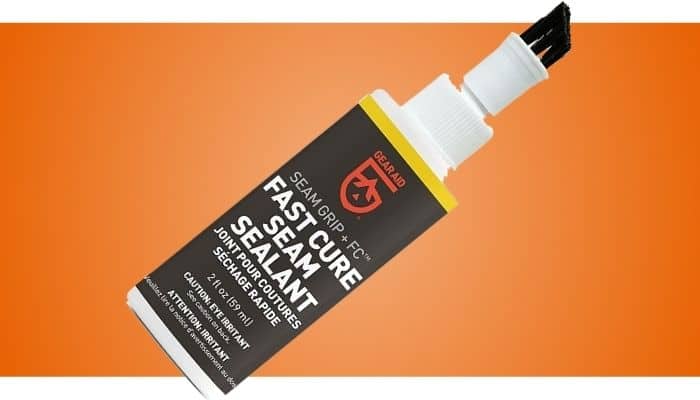
If you need a fast-curing seam sealant for your nylon tent, be sure to check out Seam Grip FC by Gear Aid, the new name for Seam Sure sealant. This water-based sealer is all-purpose and can be used on nylon, polyester, vinyl, canvas, and other outdoor fabric seals.
Available in two fluid ounce containers, you get up to 60-feet linear seam coverage from one unit. This makes it a good choice for larger tents, including family-sized models, as well as sealing your pop-up camper seams and tarps.
Application is easy thanks to the included applicator brush. Simply apply a thin layer to the inside seams of your tent and allow it to dry. Note that this fast drying version will set in around two to four hours at room temperature.
If you are less bothered about getting a quick dry time, or have seams with large gaps or tears, you’d be better off going with Gear Aid’s slower drying Seam Grip WP that we reviewed earlier on.
Unaffected by extreme temperatures, both hot and cold, this sealant is highly durable and will keep you dry for many camping seasons to come. The waterproof seal it provides remains flexible to ensure that won’t get any cracking or peeling, while the clear finish is almost invisible.
If you need to get your tent’s seams sealed in a hurry, then Seam Grip FC makes a very good choice. It’s also made in the USA and represents good value for money.
Iosso Seam Sealer
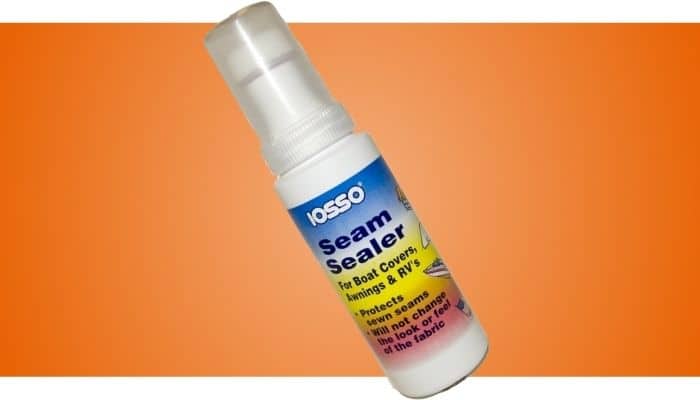
Isso Seam Sealer has been specially developed to waterproof your tent seams without changing your tent’s appearance. It is recommended for use on cotton, cotton blends, polyester, and synthetic fabrics. However, water repellency may vary when used on vinyl-coated fabrics, so this is probably best avoided for your vinyl-laminated pop-up or awning.
As well as tent seams, this product is also a popular seam sealer for backpacks, awnings, and boat covers. Available in four-ounce bottles, you have more product than with most other standard sealants. This not only works out better value for money, it also ensures that you’ll have plenty enough to cover larger tent’s seams, as well as some left over for in-field repairs or for treating your backpack.
This particular tent seam sealer has a foam tip applicator. It’s not the easiest to apply given the runny, water-like nature of the product. This can make it very difficult to adequately seal the upper inner seams of your tent. Using a thin paintbrush can help, but you should really consider turning your tent inside out and applying to the interior from the exterior for the best results.
This non-silicone formula is a good choice for sealing larger tents and while it may take a while to get it on, it will provide you with a good water-resistant barrier that won’t visibly stand out. Its larger than average format also makes it a good value choice.
Gear Aid Tenacious Tape

When you’re camping, it’s always wise to expect the unexpected.
Packing a roll of Gear Aid’s Tenacious Tape can not only save the day, keeping you dry in your tent with an on-the-spot repair, it can also save your expensive camping gear. As the saying goes, a stitch in time saves nine. Quickly stick and save your down jacket, tent, or backpack while you’re in the field and prevent a small hole from becoming a massive tear.
Not recommended for use with natural fabrics, such as cotton, this highly versatile, multi-purpose tape aggressively bonds to plastics, vinyl, rubber, nylon, and mesh for a permanent seal. Not only is it highly durable, it is also flexible ensuring your tent or outerwear still functions and folds as before.
The clear vinyl version of this tape is an excellent choice for almost invisible repairs to your tent, although you can also find it in a highly durable rip-stop fabric version in green and gray, as well as in a variety of colors in a nylon fabric.
Measuring 3 x 20 inches, simply clean the area to be repaired then cut, peel and stick the tape, application couldn’t be any easier. This highly-popular product is also washable and it won’t peel off over time. As well as an instant solution to repair your leaking tent seams, it can also be used to repair pinholes, rips, and tears. Use it on high-wear areas to prevent abrasive surfaces from damaging your gear.
Thanks to its instant action and high durability, this multipurpose tape is a must for any camping trip, allowing you to stay outdoors for longer by making in-field repairs that really are effective.
Best Tent Seam Sealer Comparison Table
Buyer’s Guide to Buying the Best Tent Seam Sealer
Unsure which tent seam sealer to choose? Read through our best tent seam sealer buyer’s guide and find out what you need to look out for.
| More Great Camping Gear |
|---|
| Water Repellent Spray for Tents |
| Mosquito Net Tent |
| Best Bivouac Sack |
Price
Tent seam sealers are fairly inexpensive products, with the cheapest often performing just as well as the higher priced versions. However, you may find that spray-on versions or units with extra applicators come in priced a bit higher than standard versions. If you value your time or are in rush, you may want to pay a bit more for an easier to apply format.
The size of your tent seam sealer can also be a factor when deciding on your budget. It is generally cheaper to buy a larger sized bottle, or a twin pack than several individual units. This may well work out cheaper if you have a large family sized tent to seam seal.
While no one wants to pay over the odds for a product, given the time-consuming nature of sealing your tent’s seams, and what’s at stake – a miserable wet night with no sleep and potentially a ruined vacation, tent seam sealer is one product you really need to have confidence in.
So, in this case, you will probably want to pay a bit extra and go with a tried-and-trusted brand, as are all of the products in our tent seam sealer reviews.
Type of Fabric Coating
When choosing your tent seam sealer, you need to make sure that you get the right type for your tent.
This is absolutely paramount. Even if you pick a highly effective tent seam sealer, if it’s not the right type for your tent, it won’t bond correctly and water will still be able to enter.
Most tents are made with polyurethane-coated fabrics, however, there are other types around such as cuben fiber, silicone-coated, and sipoly fabrics. If you bought your tent a while back and don’t have any details, contact the tent manufacturer to verify your fabric type.
Cuben fiber/Dyneema Composite Shelters – Popular for ultralight backpacking, Dyneema Composite fabric, also known as cuben fiber, is a lightweight, weather-resistant fabric. These types of tents and shelters do not normally need to be seam sealed as they are specially seam taped by the manufacturer for fully waterproof seams.
Polyurethane-coated Fabrics – In order to effectively seal the seams in your polyurethane-coated tent, you need a urethane-based tent seam sealer.
Silicone-coated Fabrics – As only silicone will adhere to silicone, it’s important that you choose a silicone-based seam sealer for your silicone-coated tent. Otherwise, your average urethane-based versions will fail to stick and water will continue to enter via your tent seams regardless of any treatment.
Silpoly-coated Fabrics – Silicone-coated polyester, or silpoly fabric, is another type of silicone-coated fabric. However, some ultralight tents are also classed as sil/PU or sil/PeU, meaning they are coated on one side with silicone and the other with either polyurethane (PE) or polyether urethane (PeU).
While most silnylon and silpoly tents need to be seam sealed before use with a silicone-based sealant, some sil/PU and sil/PeU are seam taped by the manufacturer. Check your specific tent or contact your tent manufacturer for more detailed information.
Viscosity/Thickness
Here, you’ll find that there is a great deal of variation between one brand to the next. Some tent seam sealers are much thicker, while others have a very runny, water-like consistency.
- If you are applying with your tent set up, you’ll want a semi-thick sealer to prevent too much run-off.
- For small flat, surface applications, a thinner sealant is preferable as it will go on easier and faster.
- Water-like, runny consistency sealers will create a lot of drips, so be sure to have a rag handy to wipe off, as well as some rubbing alcohol.
- If you have a very thick sealant, you may want to add spirits. Doing so will make your application faster, as well as reducing your cure time.
Applicator
Purchasing a tent seam sealer with an effective applicator is a great way to ensure that you cut down on wastage and achieve a good level of coverage, even in hard-to-reach corners.
- Spray-on – perhaps the quickest, easiest option, spray-on tent seam sealers allow you to accurately get right into your seams from any angle.
- Brushes – some versions come with a thin brush similar to a narrow paintbrush. Other types of sealant have built-in brush applicators that screw on to the product for a faster way to a better finish.
- Foam tips – foam tip applicators are generally built-in and allow you to apply runnier sealers without too much wastage.
- Nozzle – thicker sealers may come with a nozzle head allowing you to spread the product straight down the seams with ease.
Quantity
Tent seam sealers generally come in 1-4 ounce formats.
Some manufacturers will give you an approximation as to how many linear feet you can get out of one bottle. Always take these estimates as a best case scenario, so if your total tent seams approach the total given, you’d better order two.
If you camp regularly and your tent gets a lot of use, you may find it works out cheaper in the long-term to purchase a bigger format. However, for on-the-go repairs and emergencies, you may also like to carry a small container with you on each trip.
Lastly, don’t forget to consider your other camping items and outdoor gear. If you purchase a multipurpose tent seam sealer, it makes sense to buy several bottles or a larger one. That way you’ll have some to hand for emergencies, as well as for sealing your backpack, gaiters, and rainwear.
Cure Time
Cure time varies from one product to another. If you need a fast acting product, then look out for one with a rapid cure time of just several hours.
While most tent seam sealers become firm to the touch within several hours, you should always allow approximately 24 hours of curing time. You don’t want to fold away your tent until your seams have cured, or else you’ll risk your tent getting stuck to itself in storage.
If you are using a silicone tent seam sealer, you can add a small amount of spirits with compatible products for a faster cure time. This will also thin it out a little and make application easier.
FAQ: Best Tent Seam Sealer
As you embark on your camping and hiking adventures, ensuring the durability and waterproofing of your tent becomes crucial for a comfortable outdoor experience. Seam sealing is an essential step in safeguarding your tent against the elements, but it can often raise questions for both novice and experienced campers. In this FAQ section, we address some common queries about tent seam sealer, guiding you through the process of selecting, applying, and maintaining the best product for your needs. Read on to find answers to your burning questions and gain valuable insights into achieving optimal tent seam protection.
What is tent seam sealer?
Tent seam sealer is a product designed to waterproof the seams of your tent. It is a liquid or gel-like substance that you apply to the seams to create a waterproof barrier and prevent water from seeping through.
Why do I need to seal the seams of my tent?
Tent seams are typically stitched together, creating tiny holes where water can enter during rainy conditions. Sealing the seams helps to ensure that your tent remains dry and waterproof, enhancing its overall performance and your comfort while camping.
How often should I seal the seams of my tent?
It is recommended to seal the seams of your tent before its initial use, as well as periodically thereafter. The frequency of resealing depends on factors such as the quality of the original seam sealer, the amount of wear and tear your tent experiences, and the climate conditions you camp in. As a general guideline, reapplying seam sealer every year or two is a good practice.
Can I use any seam sealer on my tent?
While some seam sealers are designed for a variety of outdoor gear, it is best to use a seam sealer specifically formulated for tents. Tent seam sealers are optimized to bond with tent fabrics, ensuring maximum waterproofing and durability.
How do I apply tent seam sealer?
The exact application method may vary depending on the specific product, so it’s essential to follow the instructions provided by the manufacturer. Generally, you’ll clean and dry the seams, apply the seam sealer evenly along the stitching lines, and then let it dry thoroughly before packing the tent away.
Can I use tent seam sealer on a tent that already has factory-sealed seams?
It is generally not necessary to seal the seams of a tent that already has factory-sealed seams. Factory-sealed seams are already treated with a waterproof coating during the manufacturing process. However, if you notice any areas where the factory sealant is damaged or wearing off, you can apply seam sealer to those specific spots.
Can I remove seam sealer from my tent if I need to reapply it or switch products?
Removing seam sealer can be challenging, and it is not recommended unless absolutely necessary. If you need to reapply or switch products, it is generally best to apply the new seam sealer directly over the existing layer. However, if you must remove the old sealer, you can try using rubbing alcohol or a specialized seam sealer remover, following the product instructions carefully.
How long does it take for tent seam sealer to dry?
Drying times can vary depending on the specific product and environmental conditions. In most cases, tent seam sealers will dry completely within 24 to 48 hours. It’s crucial to allow the recommended drying time before packing up your tent to ensure the sealant sets properly.
Can I use tent seam sealer on other outdoor gear or clothing?
While tent seam sealers are primarily designed for tent seams, they can also be used on other outdoor gear like backpacks, tarps, and rain jackets. However, it is essential to check the manufacturer’s instructions and suitability for the specific item you intend to seal.
Best Tent Seam Sealers Recap
- Gear Aid Seam Grip WP Waterproof Sealant

- Coleman Seam Sealer for Tents
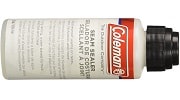
- Gear Aid Seam Grip SIL Silicone Sealant
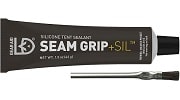
- Kenyon Seam Sealer for Tents
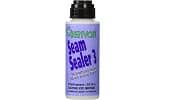
- Texsport Polyurethane Waterproof Seam Sealer
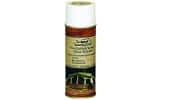
- Gear Aid Seam Grip FC Fast Cure Sealant for Tents

- Iosso Seam Sealer for Tents
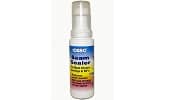
- Gear Aid Tenacious Tape for Tents
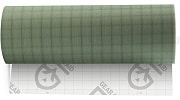
Final Thoughts
Whatever type of tent you have, it’s always best to be safe than sorry and regularly check your seams.
If you need to seal your tent seams, there are plenty of excellent seam sealers around, just be sure to consider your needs and your tent’s fabric type. Inexpensive and not too tricky to apply, you’re sure to find the best seam sealer for your tent in our best-rated tent seam sealer selection.
An excellent, multipurpose tent seam sealer, the best-selling Seam Grip WP is a great choice for your nylon, canvas, or polyester tent. You can also use it on pretty much all outdoor gear fabrics, making it a good buy for also treating the seams on your backpack, gaiters, and raingear. Made in the USA, with two applicator brushes included, Seam Grip WP is our go-to favorite.
For the easiest application, you can’t beat Texsports professional-strength, spray-on Waterproof Tent Seal Sealer. Colorless, washable, and flexible, it’s a highly popular choice and makes getting into corners and tricky angles a breeze.
If you have a silicone-coated tent, Seam Grip SIL is our favorite silicone tent seam sealer. Long-lasting and highly durable, you can also use it to repair pinhole leaks and small tears, as well as for waterproofing your tent’s seams. If you have a silicone tent, don’t leave home for a camping trip without it.
I’ve used the Gear Aid Seam Grip WP on my last hiking trip. Totally agree with the review, it’s a lifesaver!